

Kamituga, South Kivu Province, May 5, 2021
Reading time:
10 min
Yet Congo has one of the lowest levels of GDP per capita in the world, and subsistence artisanal miners toil in dangerous conditions with little hope of scratching out anything more than a meager existence.
This longstanding disparity has only grown as the coronavirus pandemic pushed up the worldwide gold price to its highest value ever last August ($2,048 an ounce). Meanwhile, local prices offered from buyers in Africa went down, according to The Africa Report, reflecting the imbalance in an international supply chain that exploits poor workers at the source of wealth. Hundreds of thousands of people in South Kivu, including women and children, work in the informal mining sector, mostly in gold.
Germany’s Federal Institute for Geosciences and Natural Resources estimates the Congo’s artisanal gold production at 15-22 tons per year, with an approximate annual value of $543-$812 million.

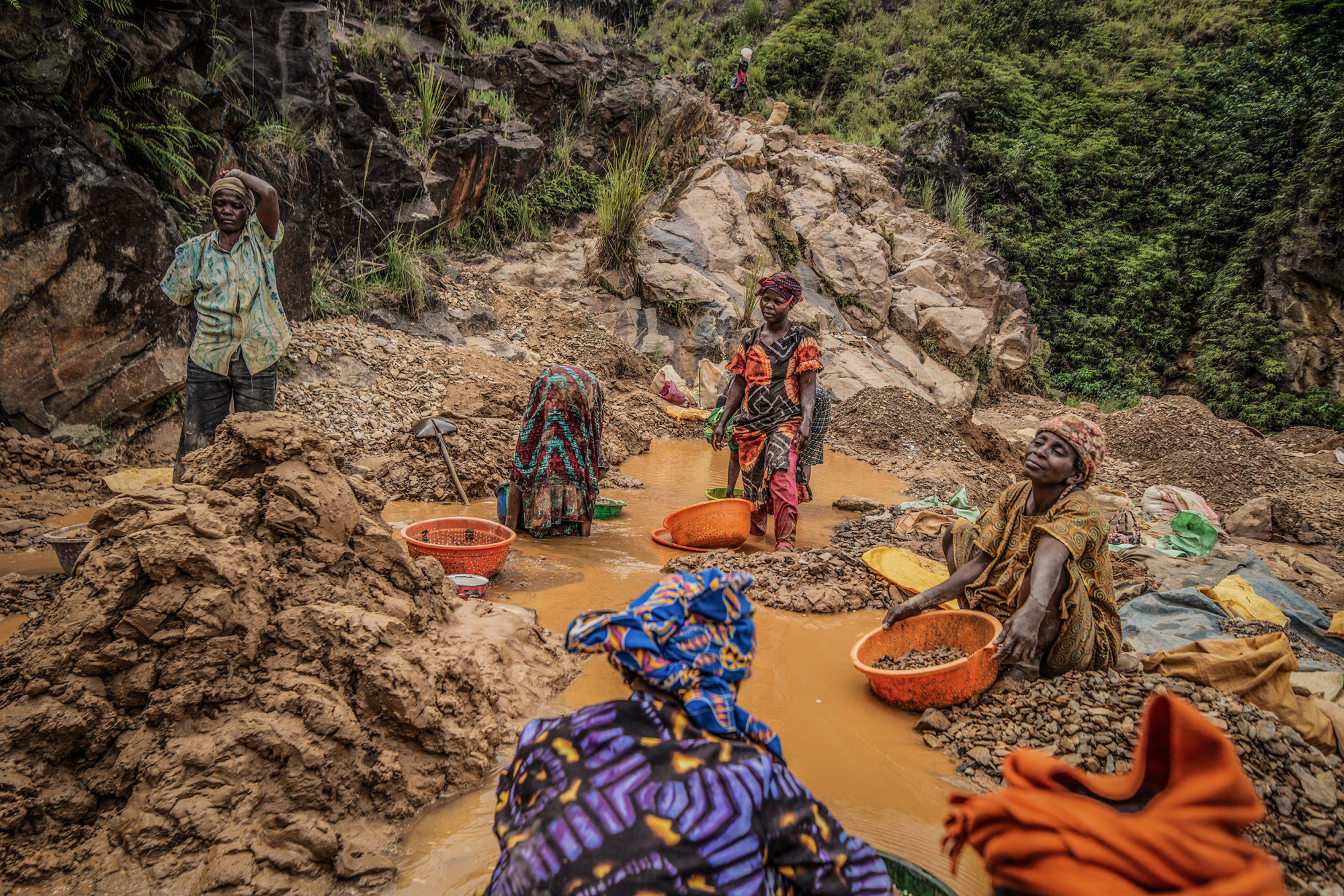

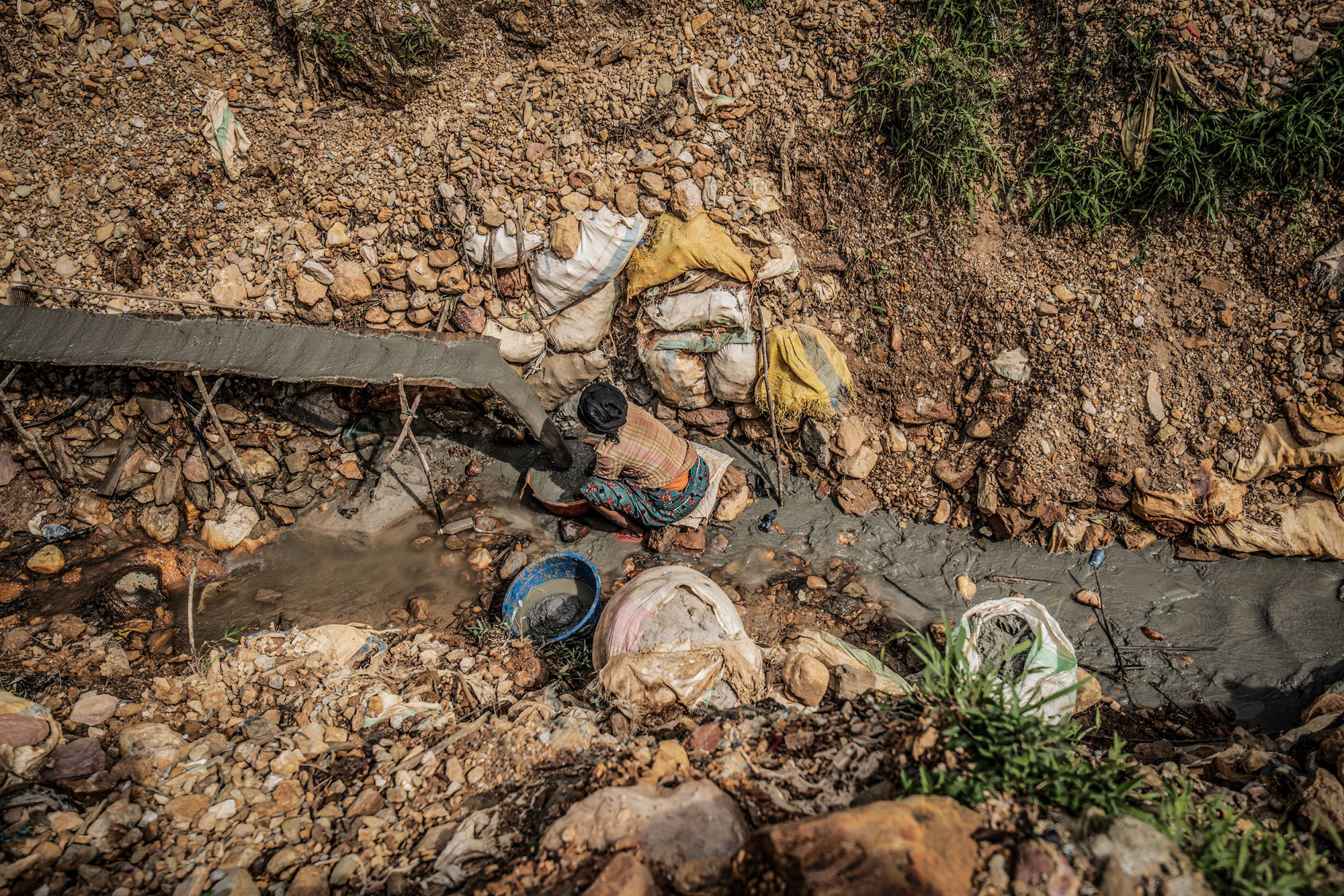
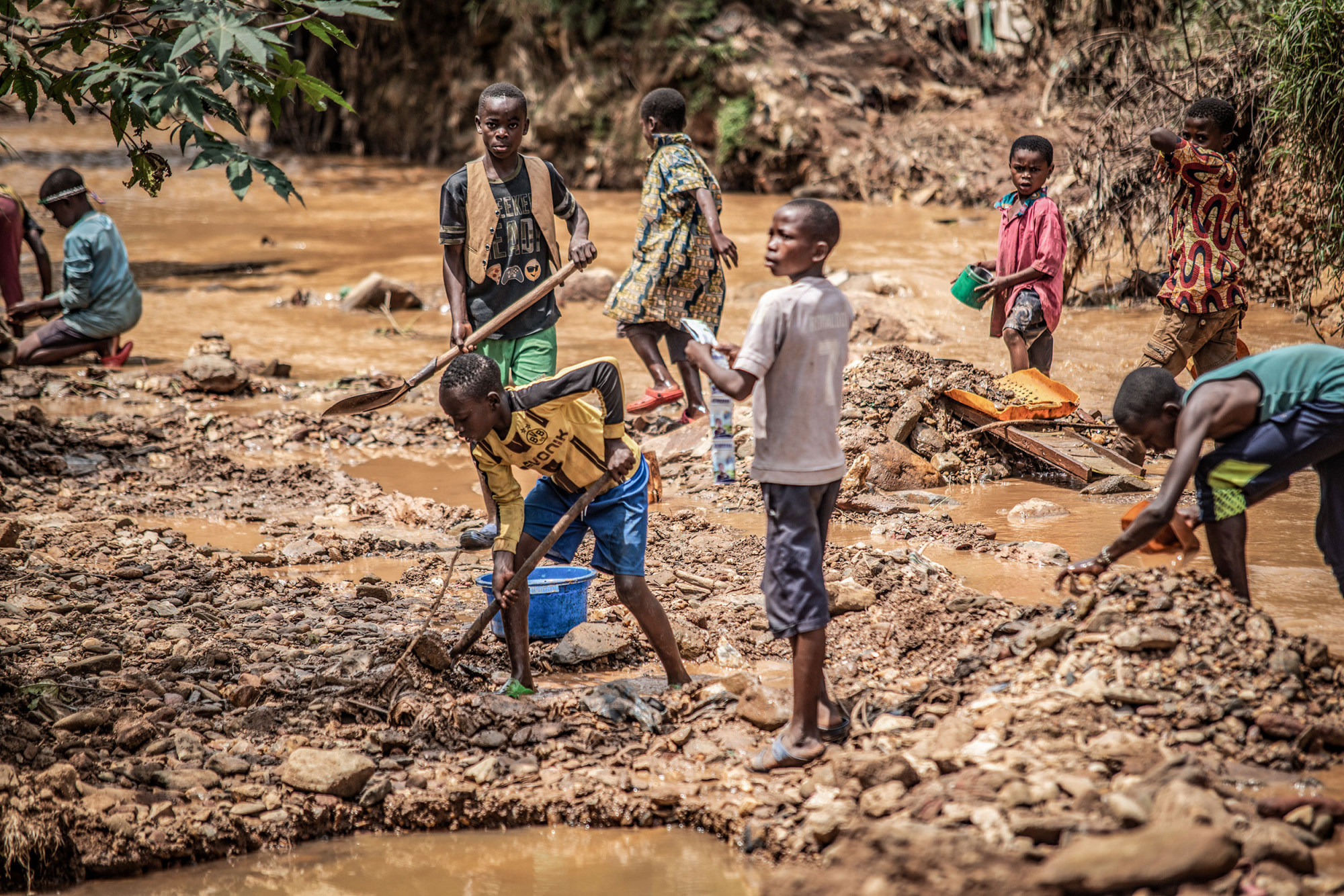
The miners face plenty of risks excavating the gold – 50 artisanal miners died in a mine collapse at Kamituga last year— while access to health care and education for children is virtually non-existent. Heavy metals such as mercury, which is used to separate gold particles from mud, can enter into the water table and food chain, poisoning miners. And with much of the local population working the mines, few are left to farm and grow crops, leading to inflated food prices and widespread malnutrition. Congolese law bans child labour and UNICEF has tried to eliminate the practice from Congo’s mining communities, but children could be seen digging through Kimituga’s rivers last month with basic equipment and no form of protection.
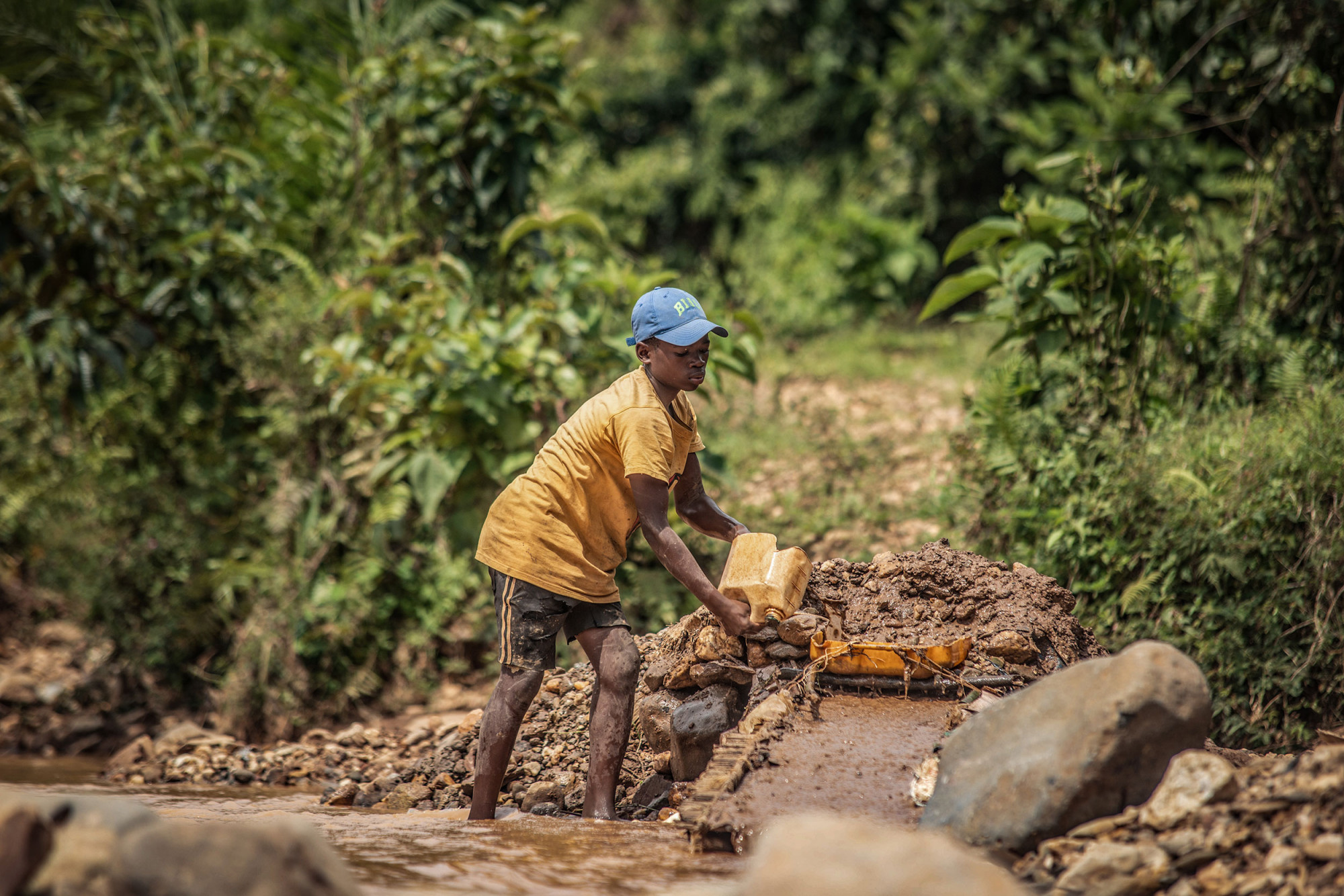
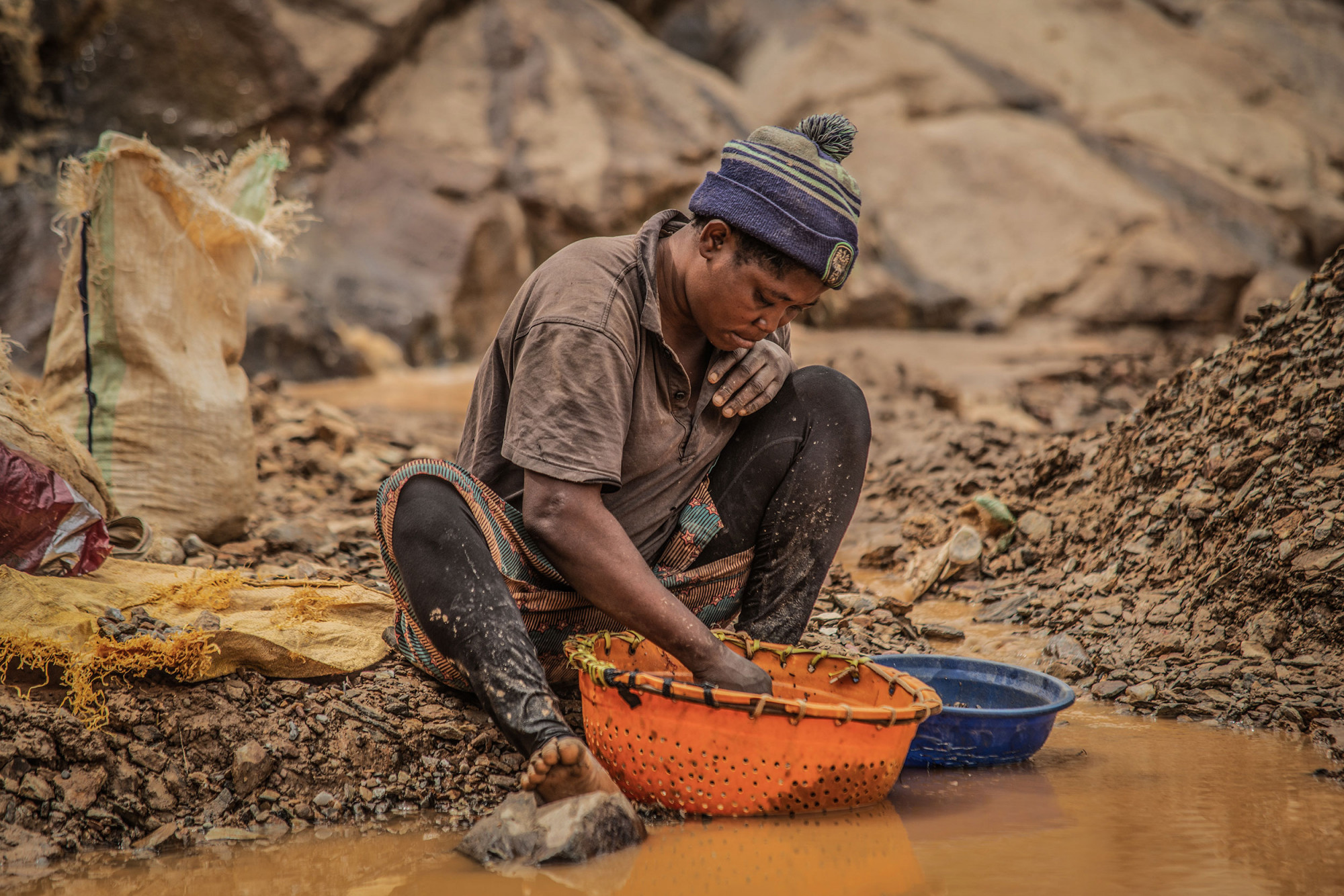
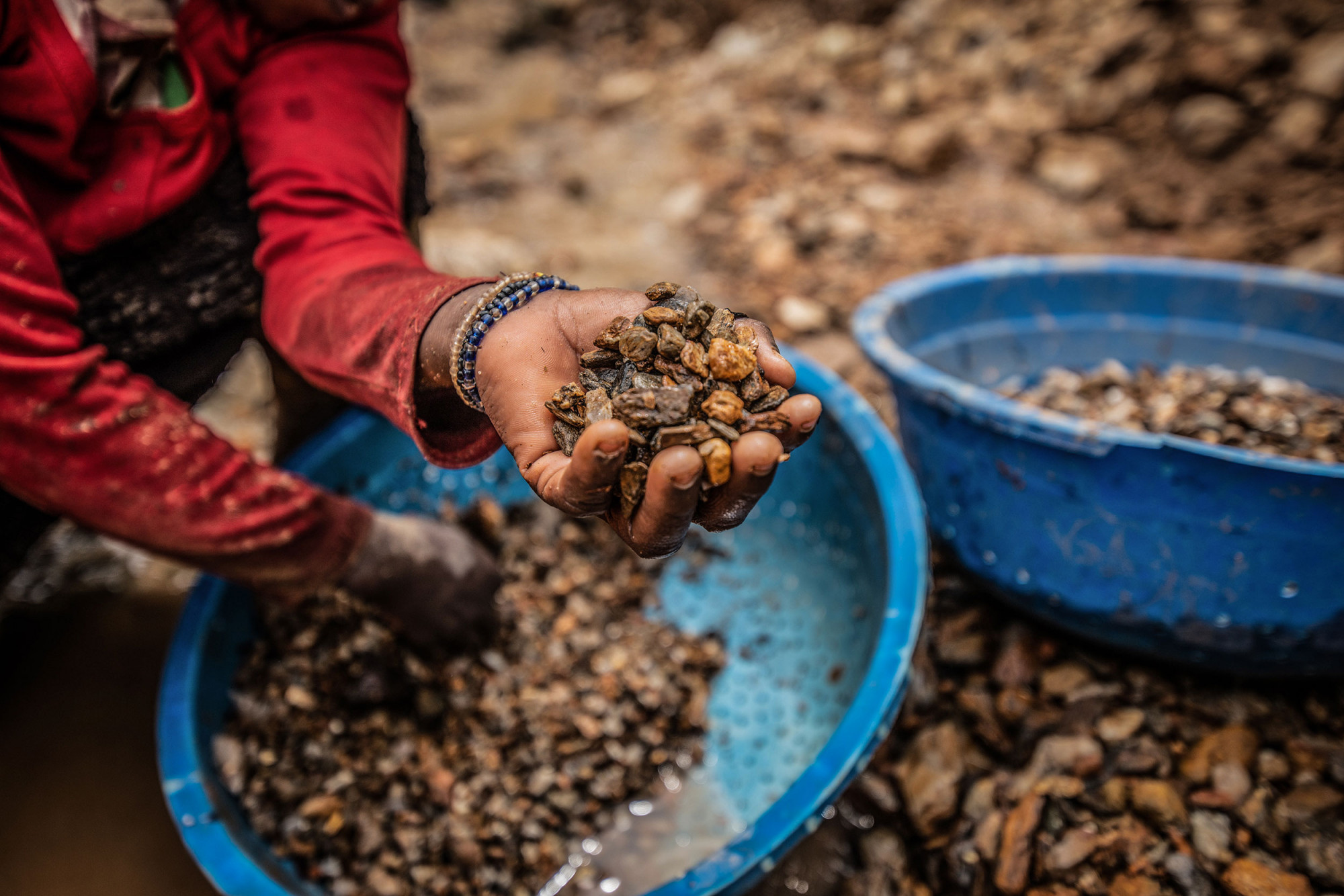
“Some children here work in the mines every day, working several hours at a time,” Idi Kyalondwana, who works for a mining cooperative, told FRANCE 24 Observers after a visit to Kamituga in February. “Some actually go down into shafts that are several hundred metres deep and tunnels to dig for gold without any safety measures. It’s incredibly dangerous. There are often cave-ins.”
Gold mining also drives Congo’s long-running web of interlocking conflicts, with the trade shrouded in various forms of illicit trading. In a recent report, The Intermediaries: Traders Who Threaten the Democratic Republic of Congo’s Efforts for Conflict-Free Gold, IMPACT documents show how registered traders and exporters provide a veneer of legality by declaring a small percentage of their gold exports while pocketing massive profits and avoiding official taxes from the illicit trade. This means that gold smuggled out of Congo and flowing onto the legal international gold market–into consumer products—is potentially tied to criminality, money laundering, armed groups, and human rights abuses, according to the September 2020 report.
The London Bullion Market Association, the global authority for precious metals, in November published recommendations to reduce the illicit trade in gold mined in Congo, but little has changed over the years.
Kamituga has been a mining town since the 1920s, when large quantities of gold were discovered there, and a succession of big companies arrived.
The Kivu Mining Society (SOMINKI) and the Canadian company Banro Corporation, which has the principal mining concession in the town, control most of South Kivu’s gold deposits. Banro Corporation’s activities were suspended in September 2019 due to rebel militia activity in the province. Banro has traditionally allowed some small-scale artisanal mining, but has discouraged mechanized efforts to extract gold.
Miners who dig and transport can earn between $56 and $136 per month, according to The Conversation, while skilled workers such as timber workers, drillers and machine operators earn between $116 and $180 per month. Technical directors and team leaders earn between $172 and $412 per month. Successful shaft managers can make a profit of between $764 and $1670 per month. Small traders make between $200 and $400 per month, while master traders make much more, up to several thousands of dollars per month.
The majority of miners are young men, but many women are also drawn to mining in the hope of earning more than they can from agriculture. Congo’s female miners face discrimination and obstacles by local authorities, forcing them to sell their mineral products through middlemen, according to the World Bank. Systemic structural exclusion relegates women to the lowest, least profitable jobs in the mines, and deprives them of bargaining power when it comes to pay and work conditions. This also leaves them vulnerable to sexual exploitation and violence. Since 2006, women have started to unite in associations and have built a network known by the French acronym of RENAFEM (National Network of Women in Mining), which has improved their awareness of legal and reproductive rights.
Efforts to clean up Congo’s mining sector and to introduce greater transparency have seen minimal progress in a murky trade that enriches individuals and companies far from Kamituga’s muddy rivers and hills. Until there is the political will to drive real change, Kamituga’s miners will continue to labor in precarious conditions that benefit few who live atop some of the richest soil in the world.
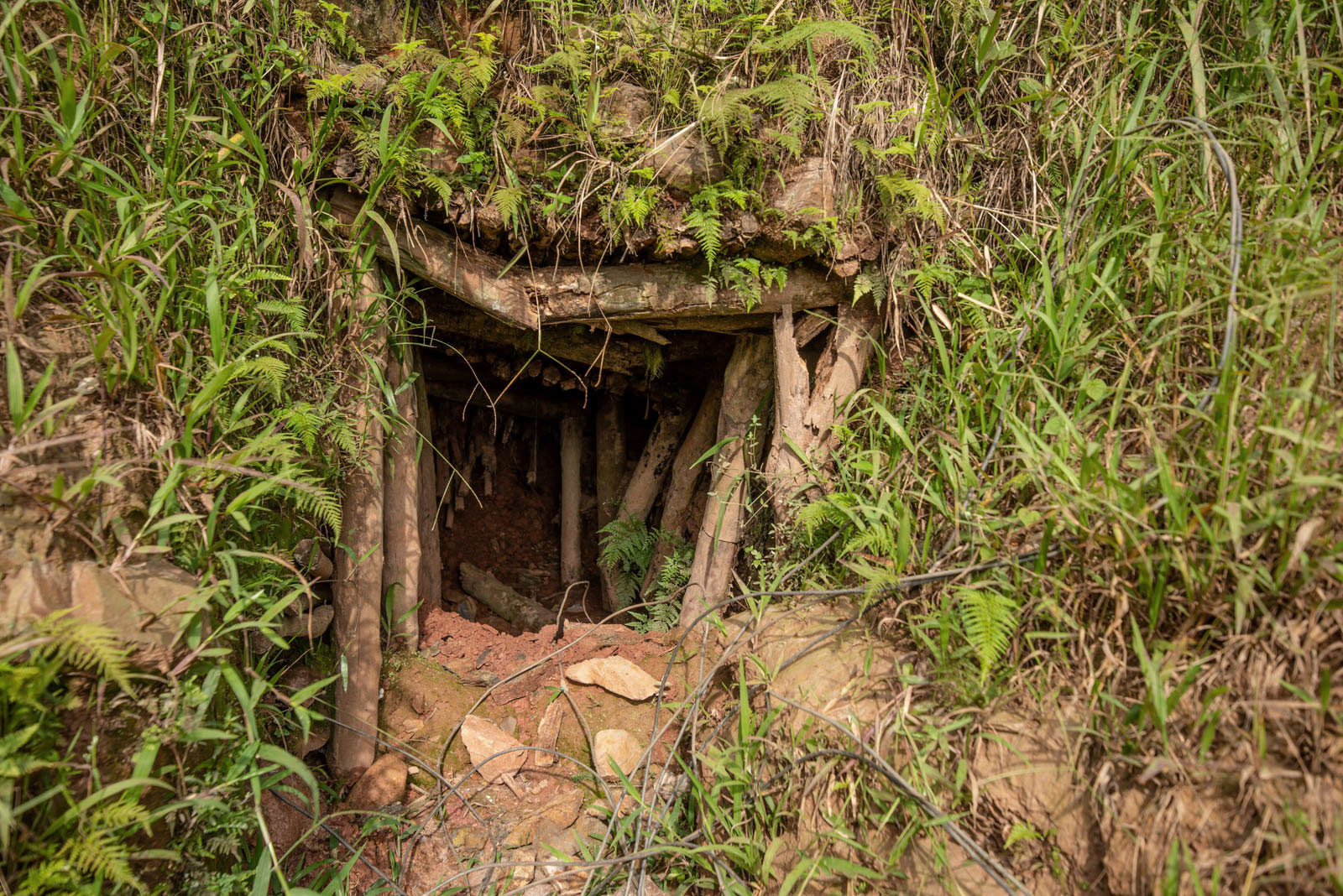
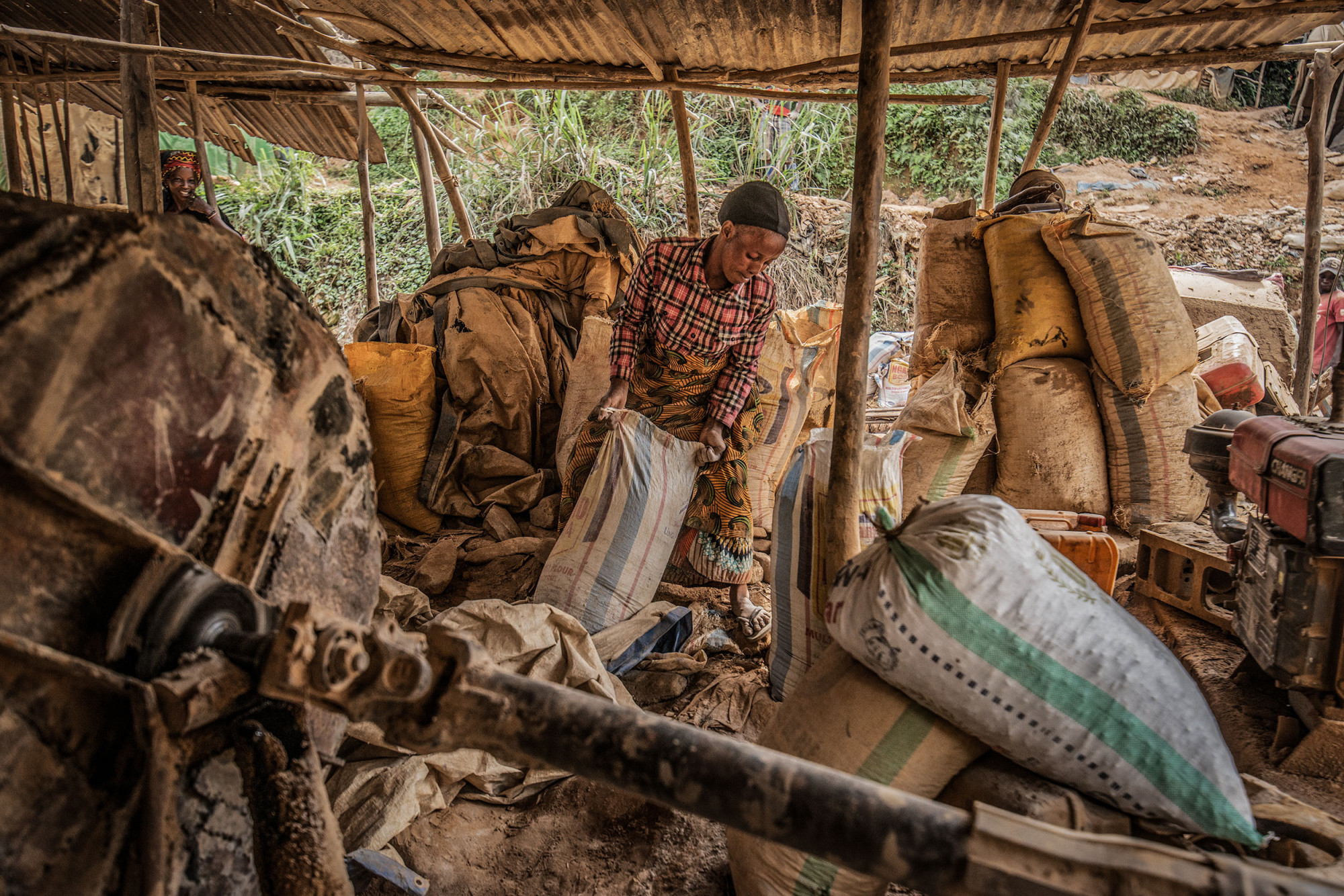
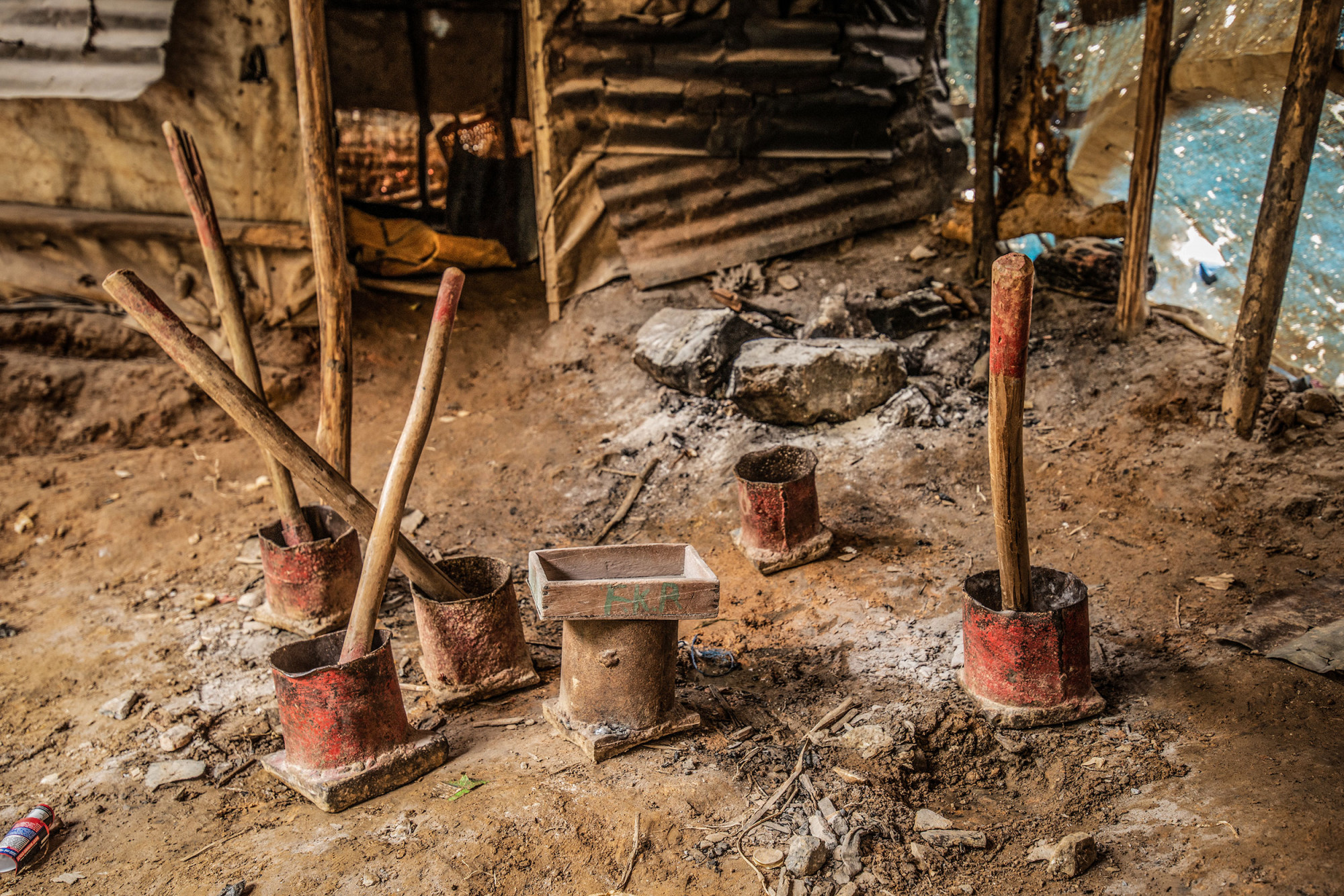
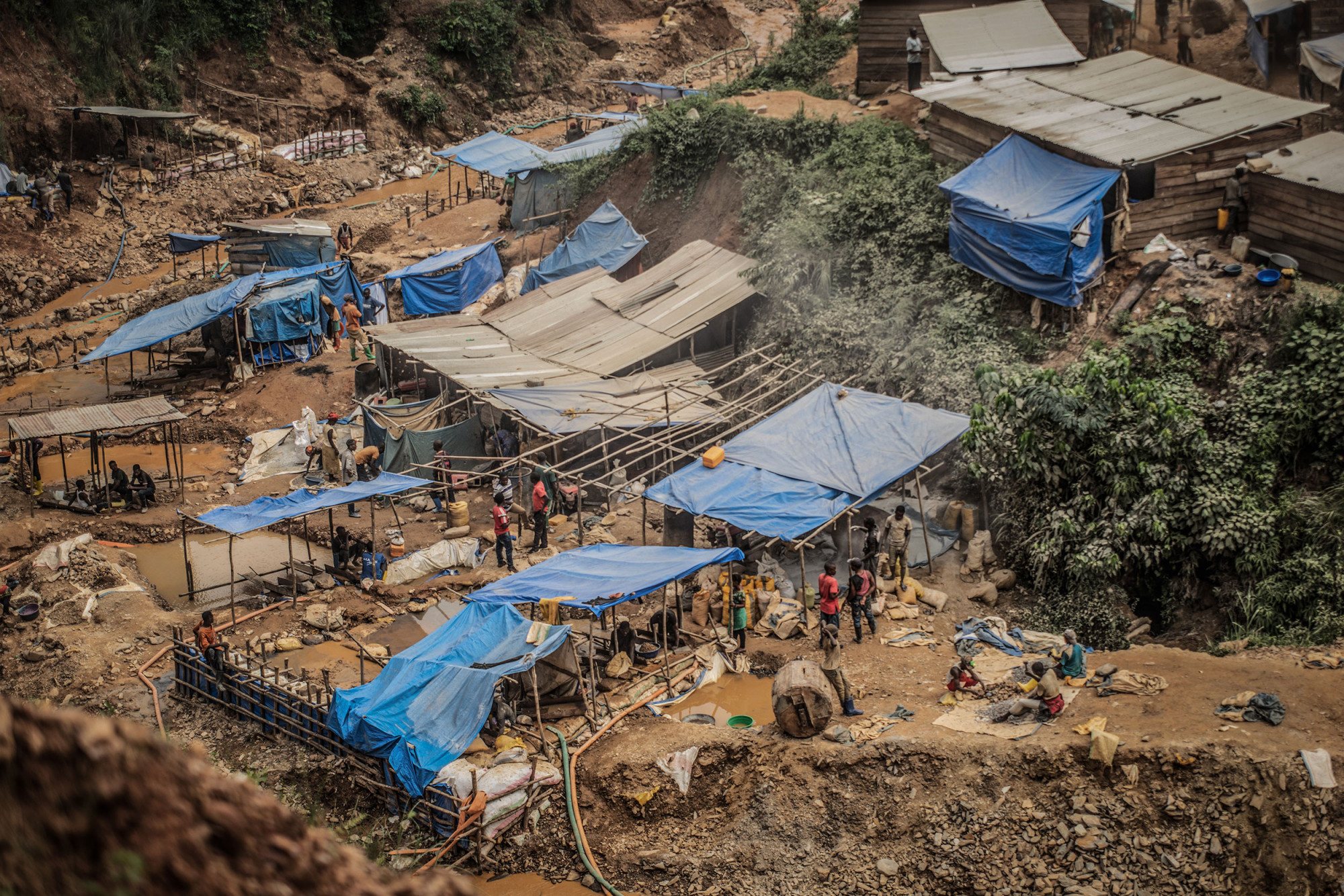
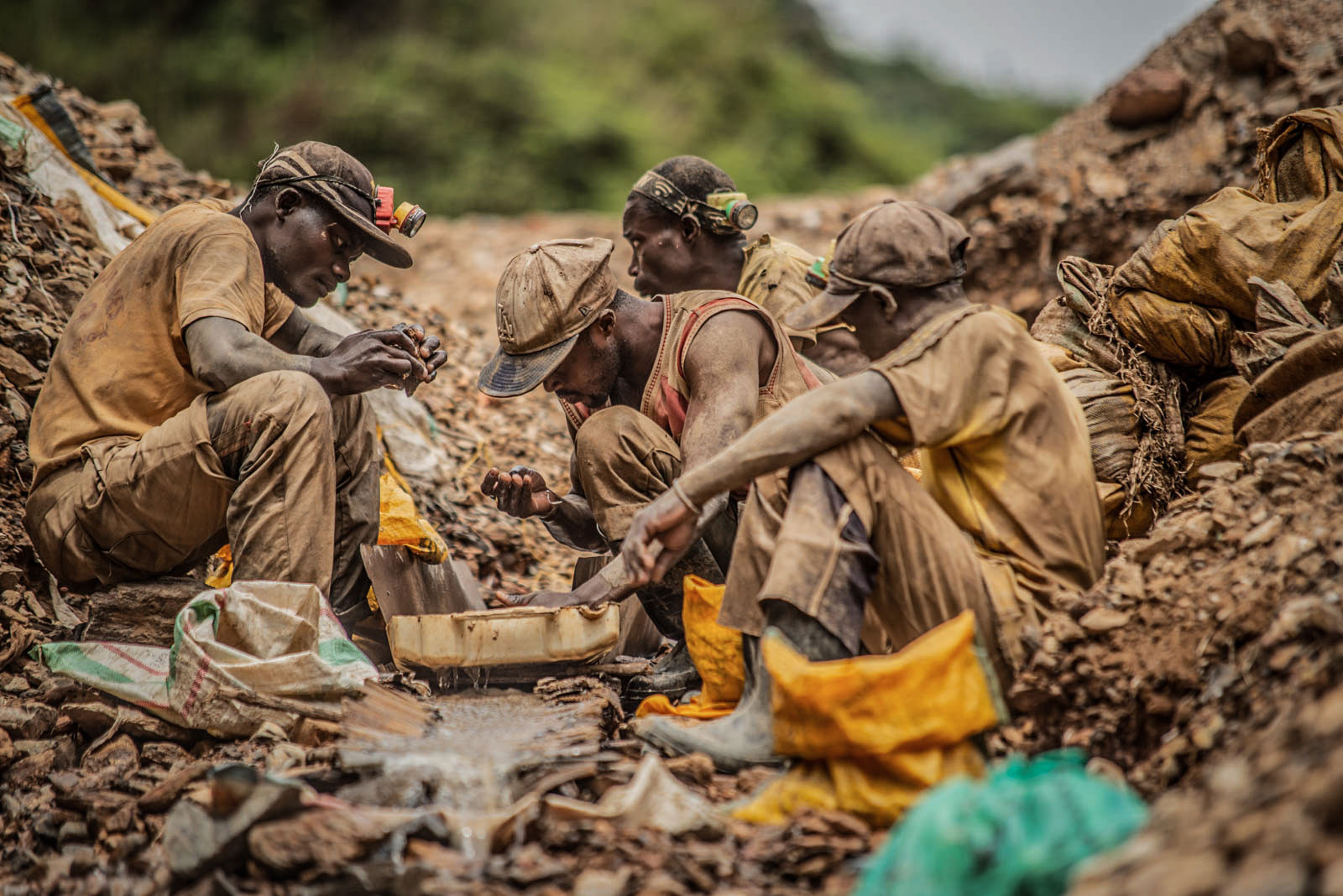

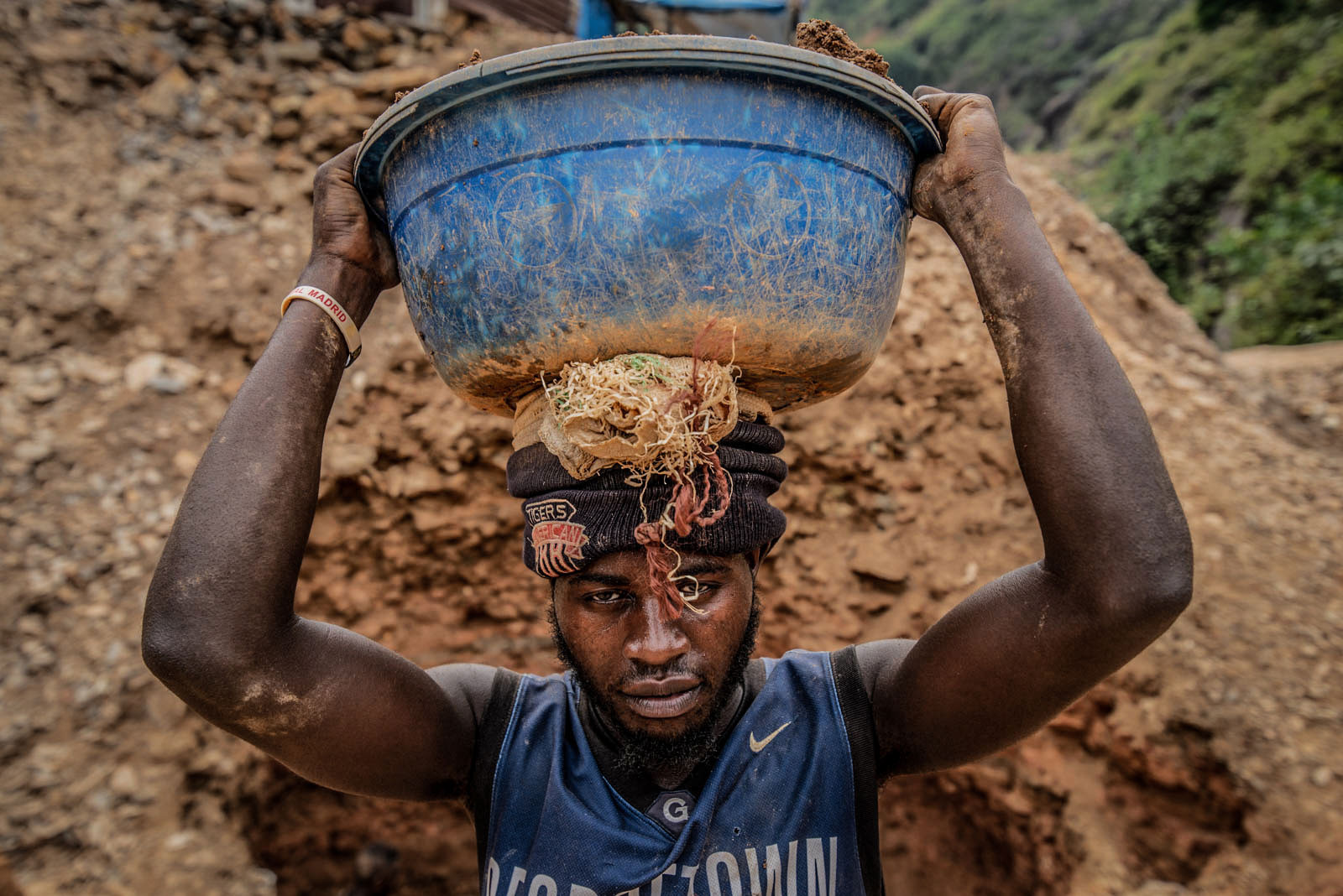
This photo essay by Moses Sawasawa for Congo in Conversation was published in The Guardian (UK) under the title "Price of gold: DRC's rich soil bears few riches for its miners".